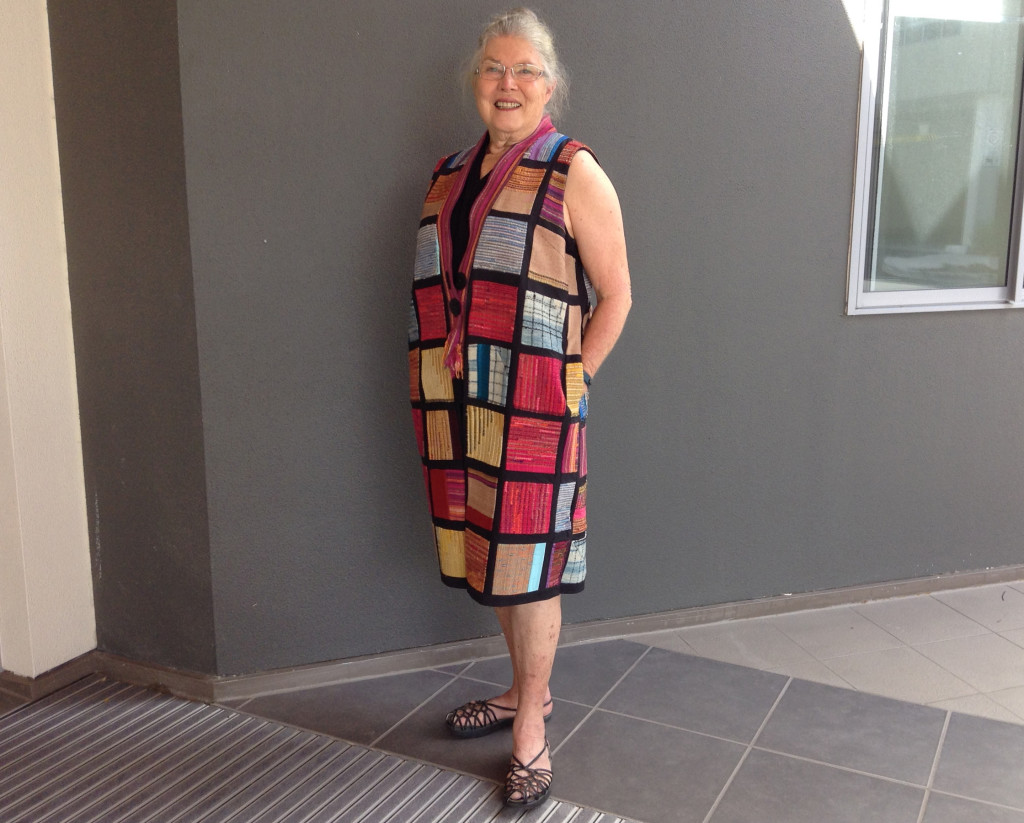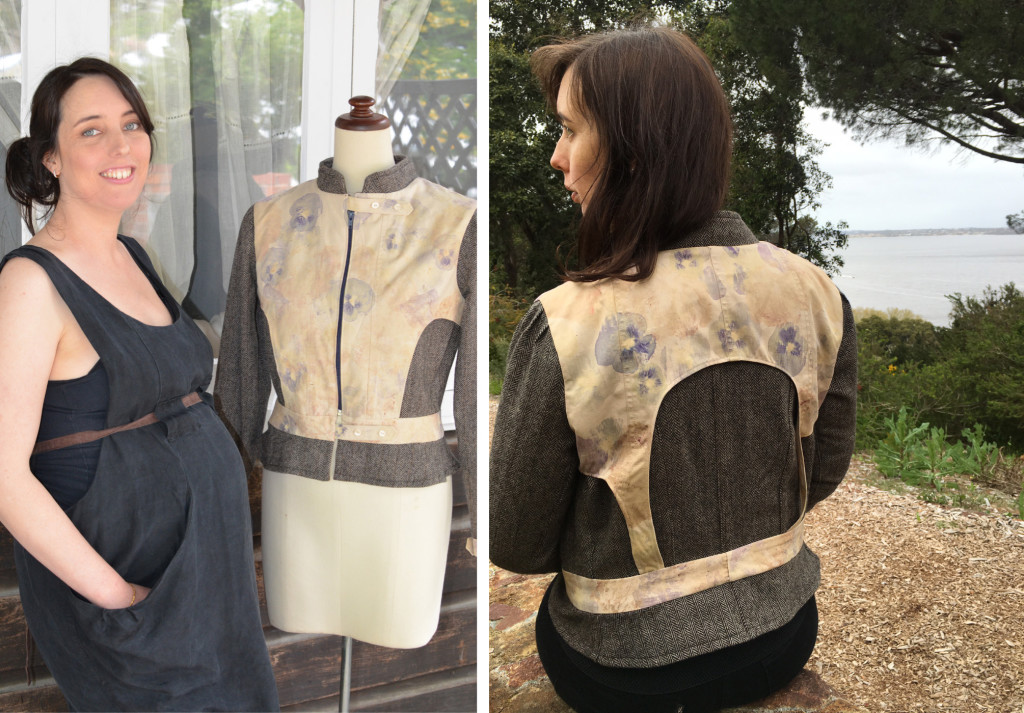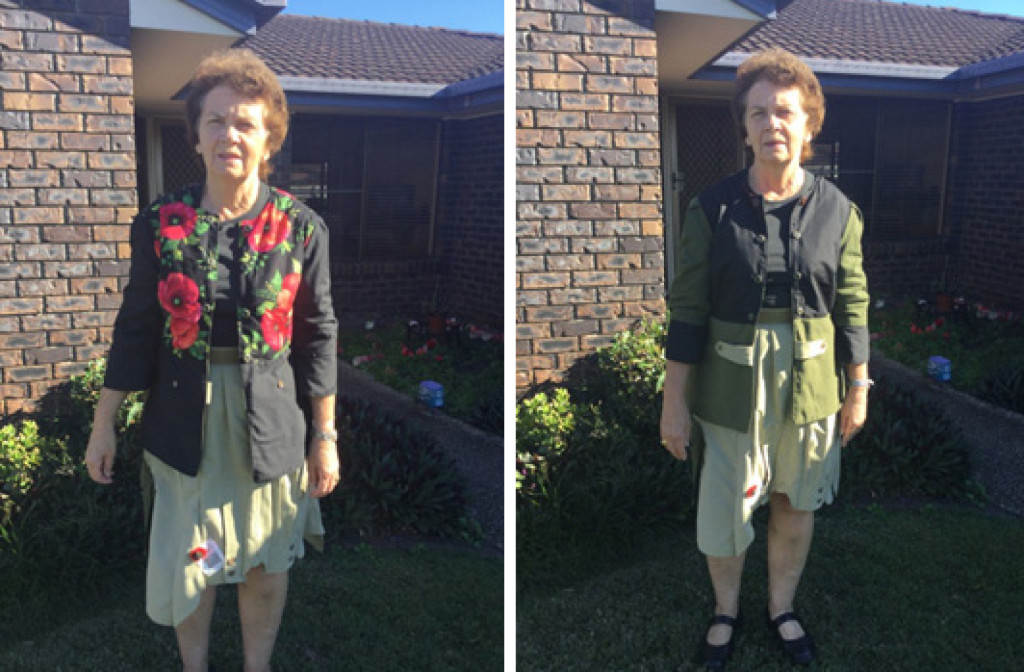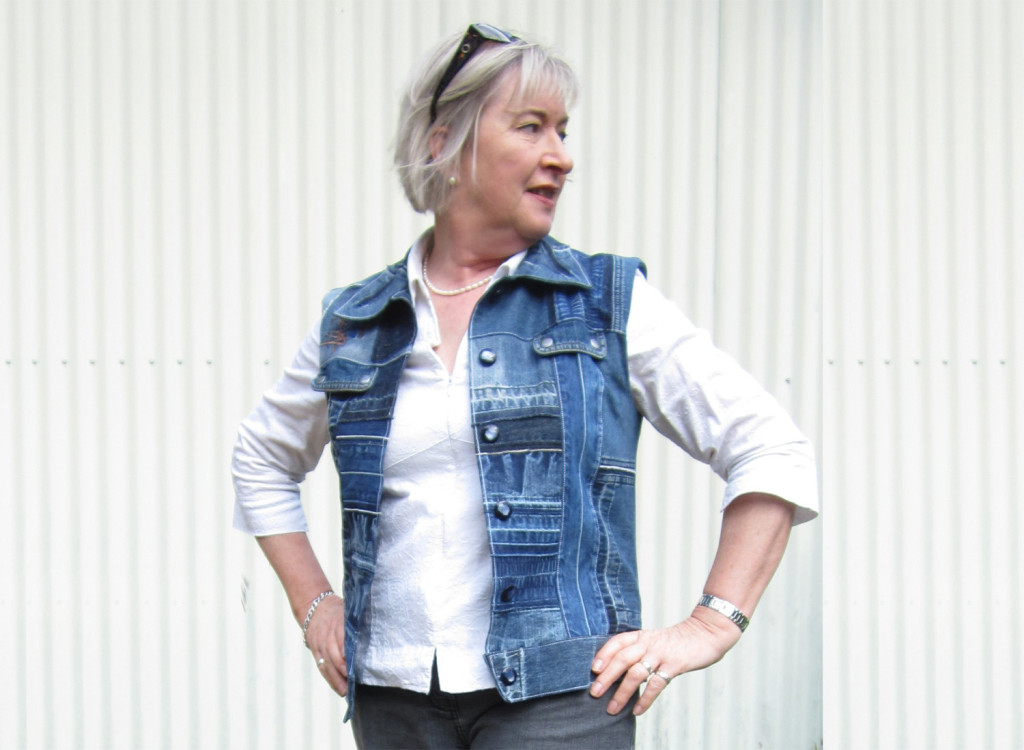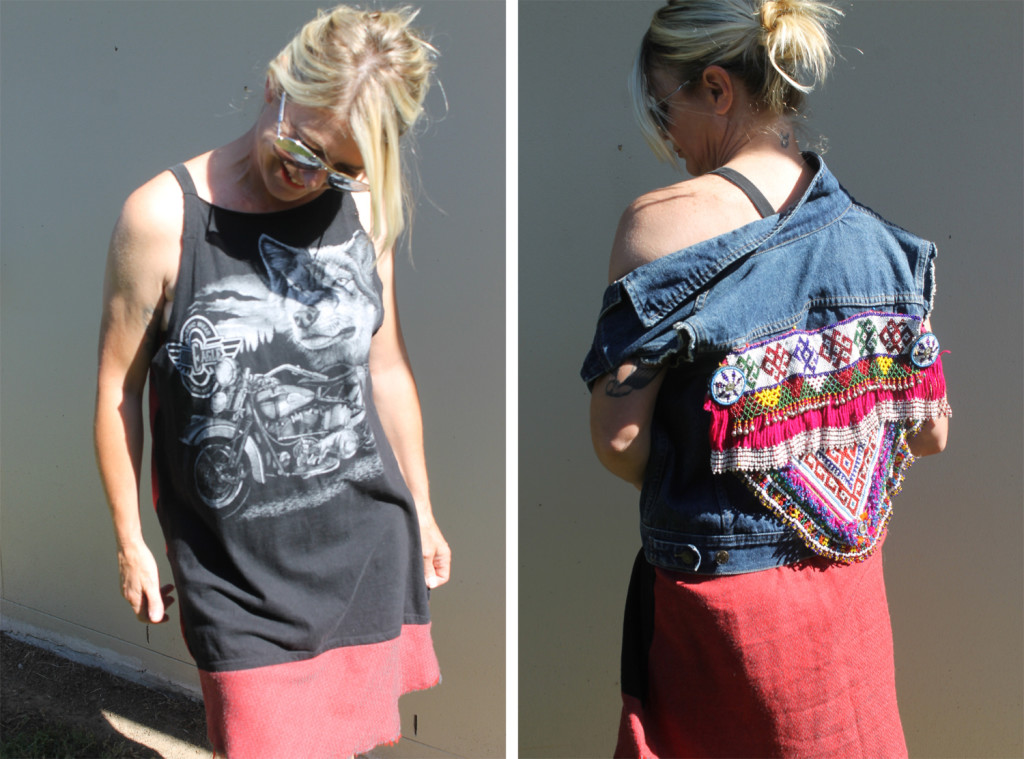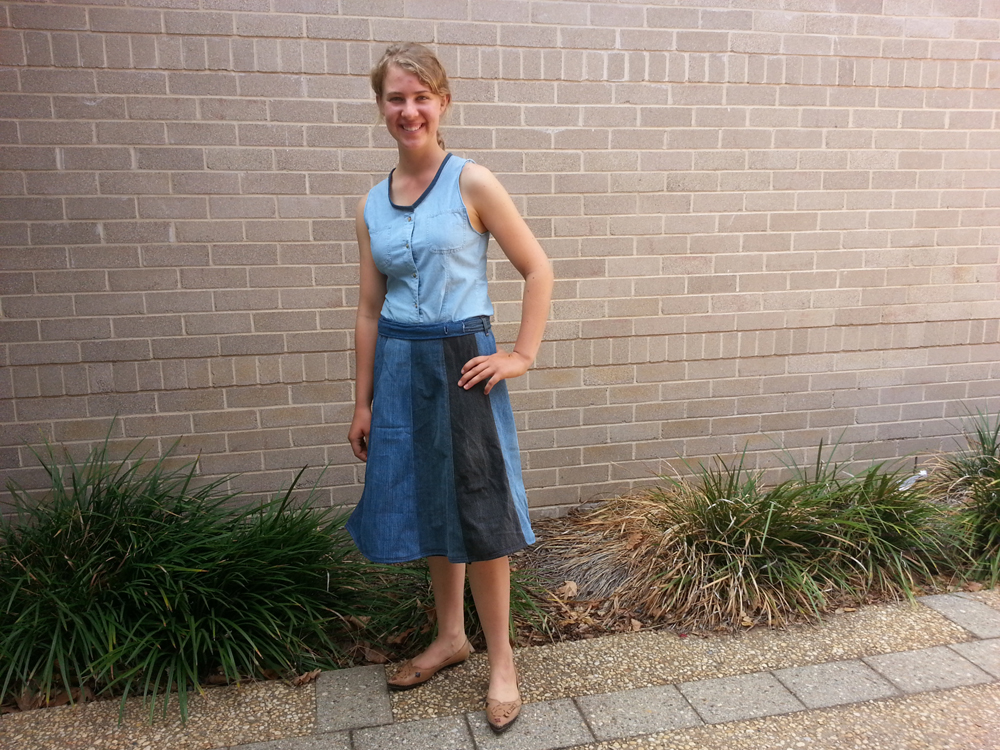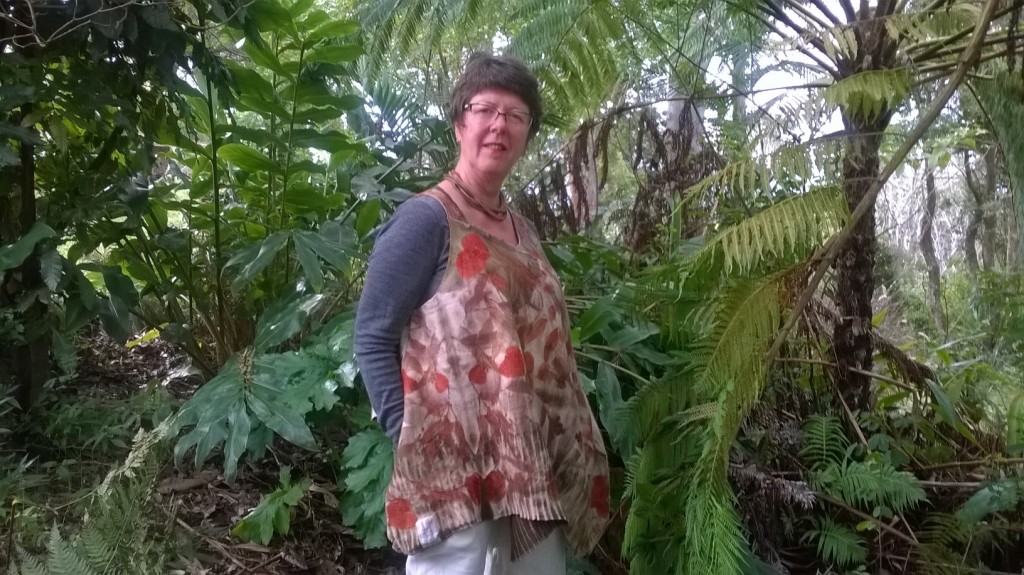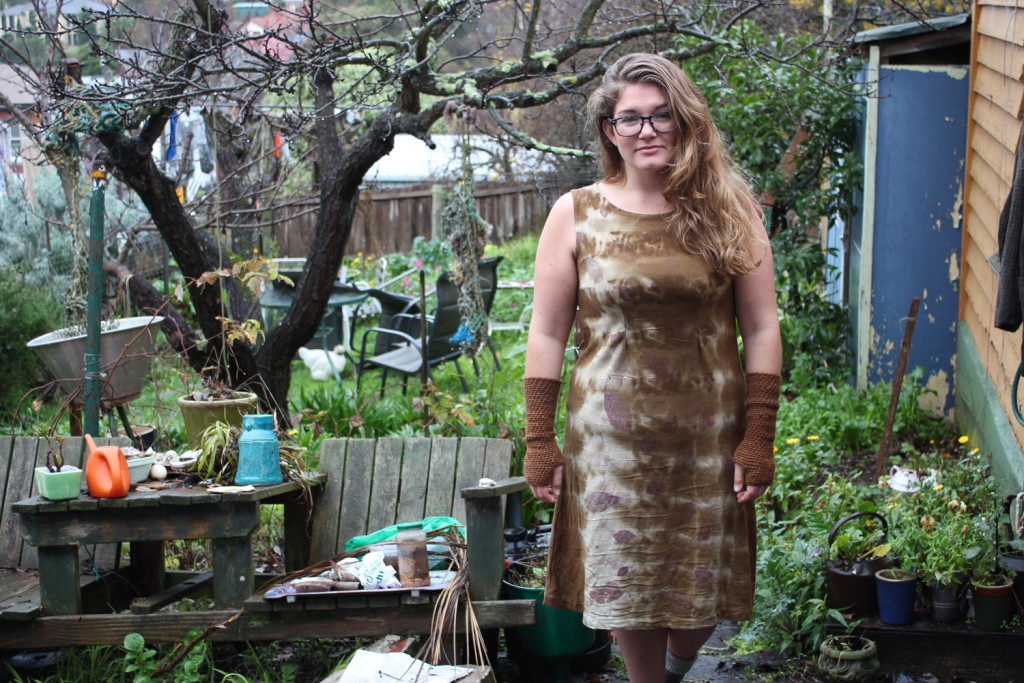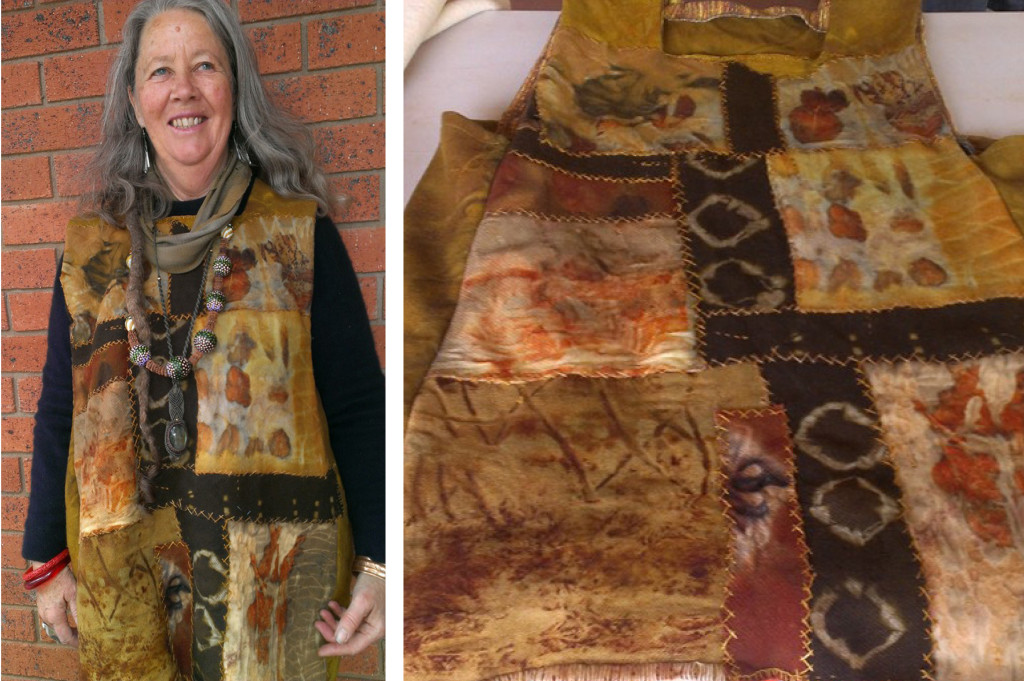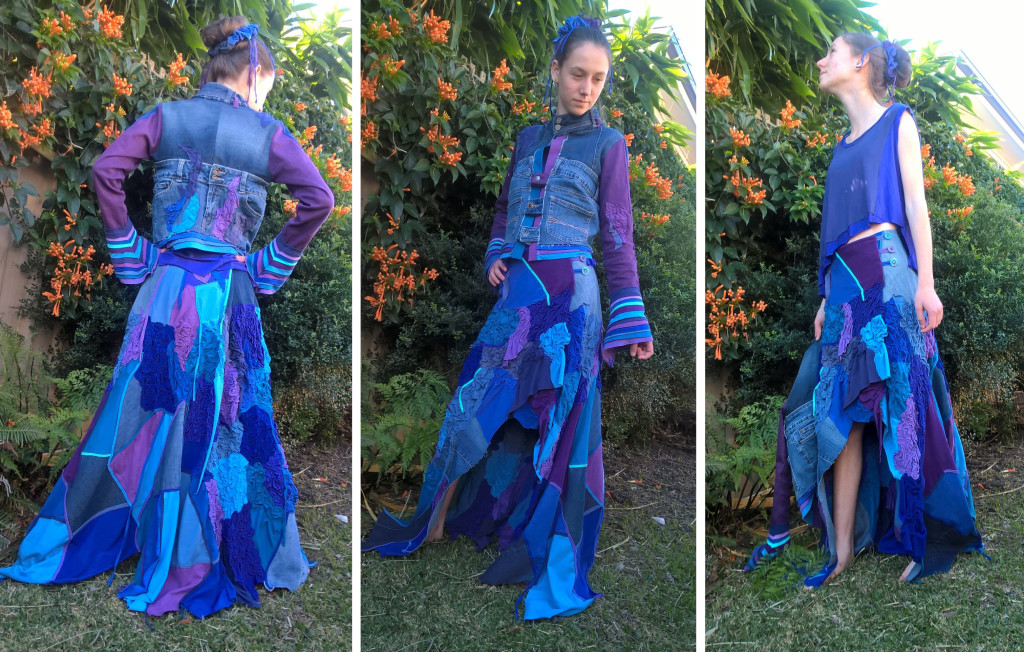Slow clothing is a grassroots response to fast fashion that considers the ethics and sustainability of garments, values provenance and artisan skills while focusing on timeless style, comfort and connection.
Brisbane-based textile artisan Jenny Jackett is the latest maker to feature as part of The Slow Clothing Project and she knows all about slow making! Jenny spins natural fibres, dyes with natural dyes and hand-weaves her own and purchased yarns on a foot-powered loom to make unique handmade creations – such as this spectacular coat of many colours made from offcuts.
